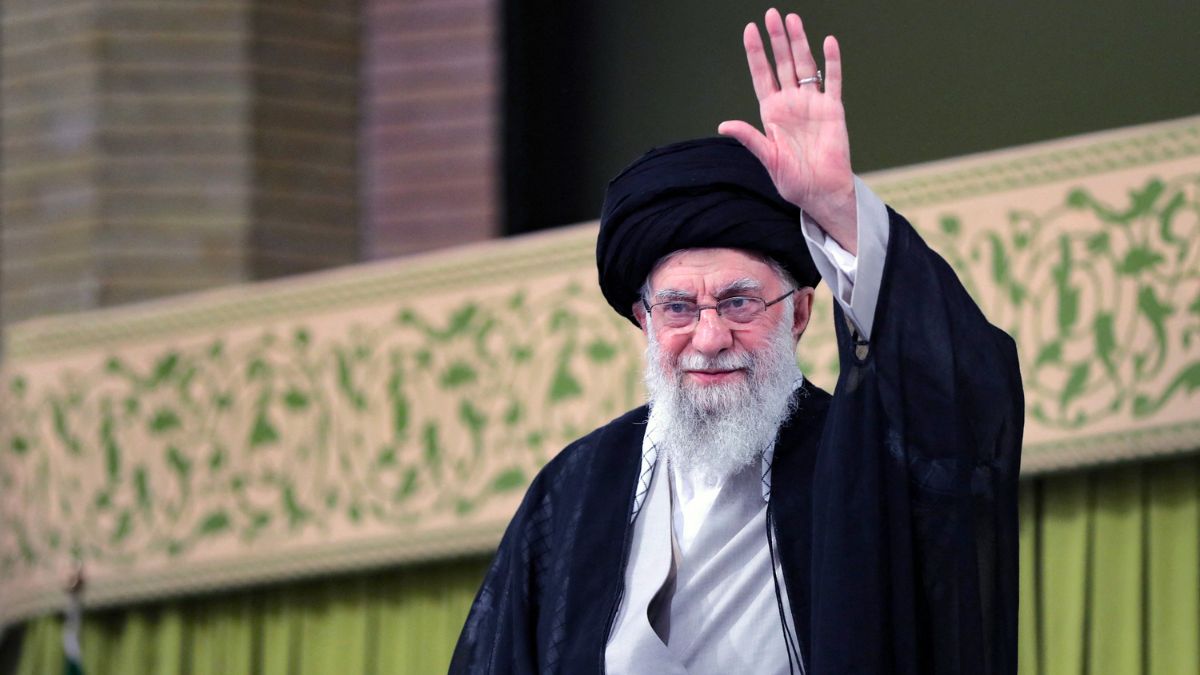As Iran and Israel remain at odds, , all eyes are on one man – Supreme Leader Ali Khamenei.
Khamenei isn’t just the spiritual leader of Iran – like the Pope for Catholics – he is also the country’s unquestioned boss.
From foreign policy to energy, the 86-year-old Khamenei has the final say in all matters.
He has ruled his country since 1989 – after the passing of Ayatollah Ruhollah Khomeini, the founder of the Islamic Republic of Iran and first Supreme Leader.
But how did Khamenei become Iran’s most powerful ma n?
Let’s take a closer look
Origins
Khamenei was born in Mashhad – Iran’s second largest city – in 1939.
Khamenei came from family of clerics.
Read Israel Iran conflict live updates here.
Like them, he received a religious education at seminaries in Mashhad before moving to the holy city of Qom.
In 1962, Khamenei became involved in political activities against the Shah – who ruled Iran until the revolution in 1979 – as a devoted follower of Khomeini.
Khamenei was reportedly imprisoned many times during protests against the Shah.
Later in the 1960s, Khamenei went into exile.
However, he returned to Iran after the Shah was overthrown.
Climbing up the ranks
Khamenei, after the revolution, rose through the ranks of government quickly.
By now, he was a close aide of Khomenei – who was the unquestioned leader of the revolution.
Khamenei served on Iran’s Revolutionary Council, became defence minister and helped create the Islamic Revolution Guard Corps (IRGC).
Khamenei was left paralysed in his right hand after being injured in a bomb blast at a mosque in Tehran.
Khamenei then became president of Iran – a largely ceremonial position – after the assassination of Mohammad-Ali Rajai.
Khamenei during his time as president would often clash with Mir Hossein Mousavi, who he felt was too much of a reformer.
After Khomeini died in 1989, Khamenei was chosen as his successor by the 88-man Assembly of Experts.
This came despite the fact that Khamenei had technically not achieved the rank needed to become the Ayatollah.
Khamenei’s ascension was achieved by changing the Iranian constitution’s requirements on who can become the Ayatollah.
The regime also consolidated Khamenei’s power by abolishing the post of Prime Minister of Iran.
Khamenei has been critical of both America and Israel, which he has described as a ‘cancerous tumour’.
Khamenei has seen presidents come and go, but he remains the final authority in Iran.
The question of who will succeed Khamenei remains an open one.
Ebrahim Raisi, a former president of Iran who was also once head of the judiciary, had once been tipped to replace Khamenei.
However, Raisi’s death in a helicopter crash in May 2024 has left Khamenei without a successor.
Many speculate that Khamenei’s son is will now likely succeed him.
Khamenei on Saturday had vowed revenge for Israel’s attacks.
“The Iranian Armed Forces will act with strength and will bring the vile Zionist regime to its knees,” Khamenei vowed.
He has since rejected US President Donald Trump’s call to surrender, warning that the US would face “irreparable damage”.
Khamenei dismissed the “threatening and absurd statements” by Trump.
“Wise individuals who know Iran, its people, and its history never speak to this nation with the language of threats, because the Iranian nation is not one to surrender,” he said. “Americans should know that any military involvement by the U.S. will undoubtedly result in irreparable damage to them.”
It has been reported that Trump vetoed an Israeli proposal to kill Khamenei during the opening days of the conflict.
With input from agencies
)